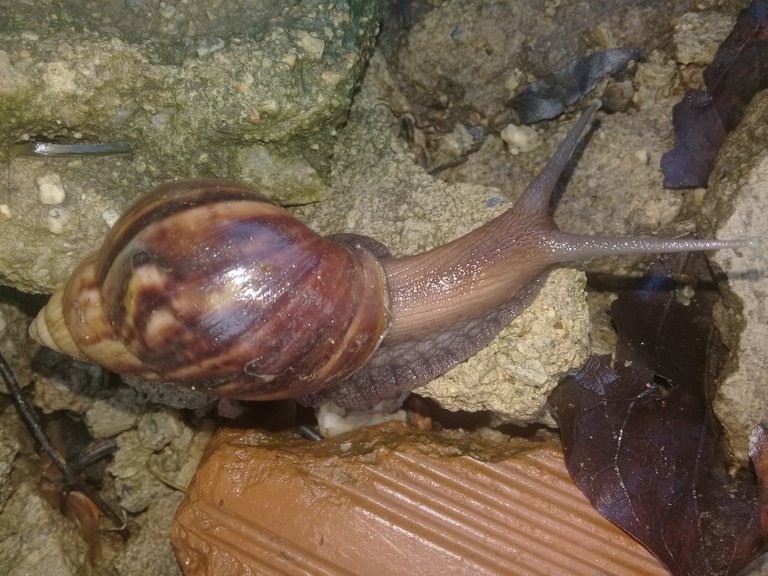
La Achatina fulica: African snail
Hello friends, look what I found in my garden, an invasion of snails, which are expanding throughout the soil and all my plants, leaving a disgusting slime or fluid, which is causing them to wither and become capable even of eating the leaves of my little plants. They are a terrible plague and very difficult to eradicate, in this rainy season they have appeared with so much humidity, I observe them mostly at night.
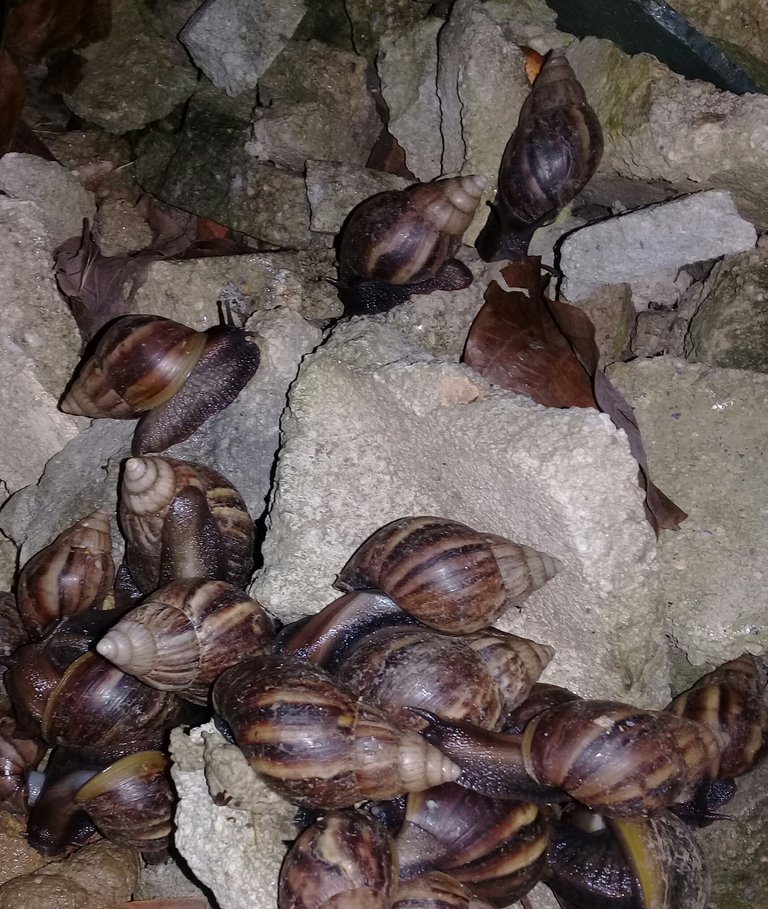
The African snail depends on humidity and can be located anywhere on the ground, trees or houses and tends to take refuge on or near the ground and under vegetation. Contact with this species of mollusk can be dangerous and even fatal for people. It can cause at least 12 diseases, including meningitis, bronchitis, intestinal disorders and encephalitis, among the most common to which humans are exposed to minimal contact with this mollusk.
This species is considered a natural predator whose reproduction cycles are difficult to control, so it expands and causes an imbalance in the local ecosystem, as it can cause damage to ornamental plants and pastures and is capable of eating practically everything, including excrement. of animals and humans.

The giant African snail is hermaphroditic and reproduces quickly, laying up to 1,200 eggs with 5 or 6 positions. It feeds on plants, leaves, fruits and stems of crops and also consumes waste.
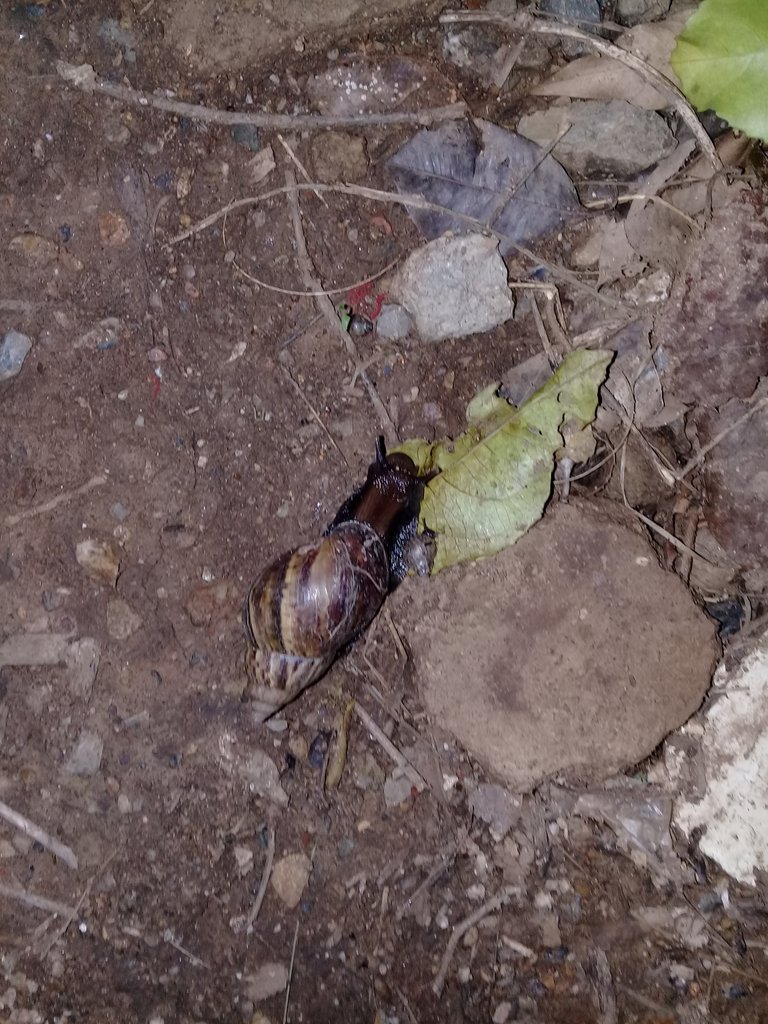

The African snail is easily identifiable. It has a dark brown color, with beige bands or stripes and its shell ends in a conical tip. Its shell can measure up to 25-30 cm in length and 8 in height.
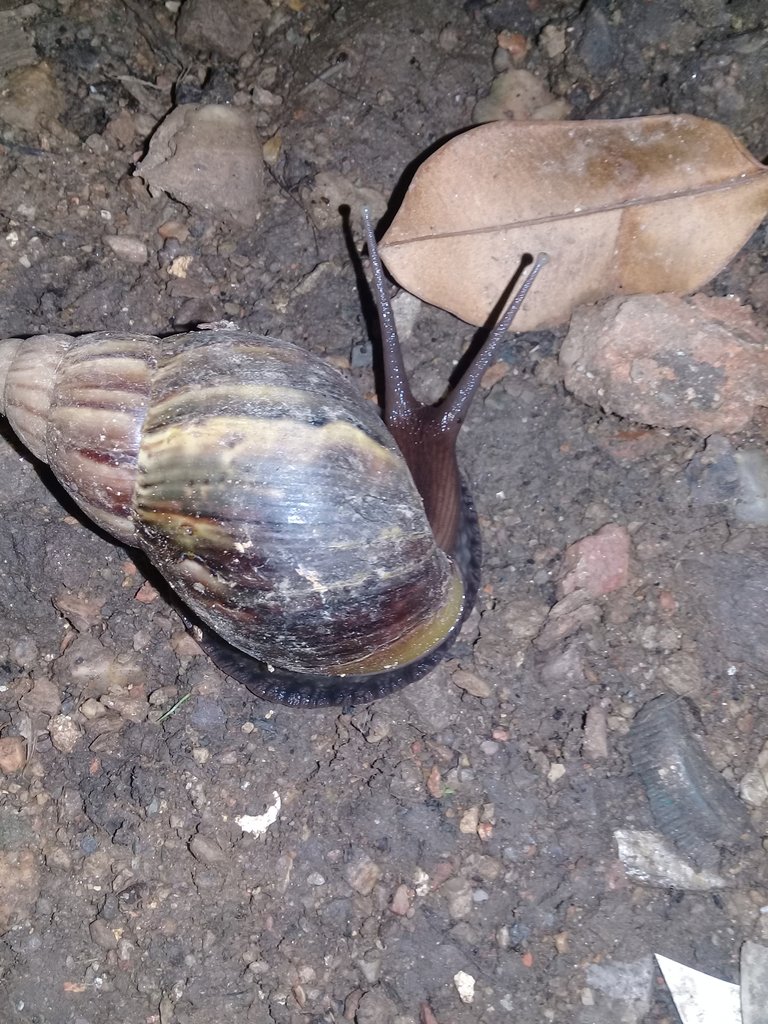
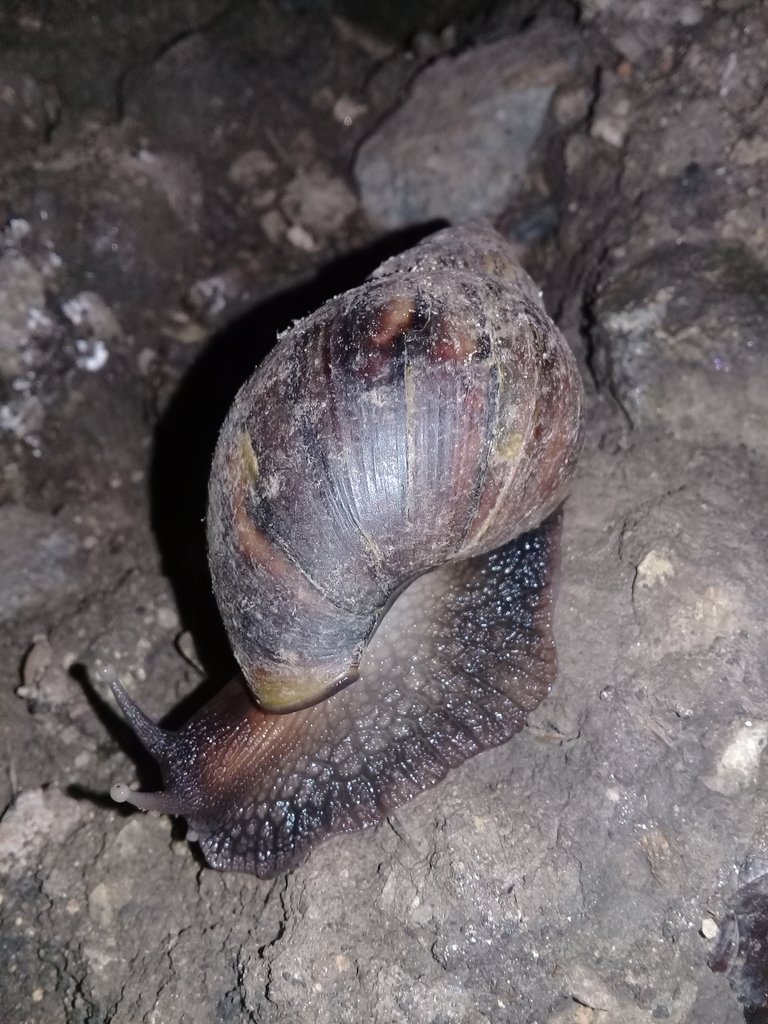
I am really surprised to see this species of snails in my garden, I hope to achieve their eradication soon, since from what I have read they are harmful not only to plants, but they can also cause damage to animals and beings Therefore, it is important to take into account that it should not be touched and that contact with the slime should be avoided, especially in the eyes, nose and mouth.
Do not use it as bait, pet or ornament, and remove wood debris, tiles and bricks or elements that could be used as shelter for the snail from the gardens.To collect them, it is recommended to wear face masks and disposable gloves or wrap your hands with plastic bags, put them in a container with water with lime or salt and then incinerate them.
Camera Used Samsung Galaxy J1 ace Category Photography Photographing invasive snails Location Villa de Cura. Aragua Venezuela Photographer @iris2016
Friends, let's be very careful with these mollusks, if you find them in your homes, try to eliminate them as quickly as possible.
Do not use it as bait, pet or ornament, and remove wood debris, tiles and bricks or elements that could be used as shelter for the snail from the gardens.To collect them, it is recommended to wear face masks and disposable gloves or wrap your hands with plastic bags, put them in a container with water with lime or salt and then incinerate them.
| Camera Used | Samsung Galaxy J1 ace | |
|---|---|---|
| Category | Photography | |
| Photographing | invasive snails | |
| Location | Villa de Cura. Aragua Venezuela | |
| Photographer | @iris2016 |
We appreciate your work and your post has been manually curated by zoology team (oscurity,nelinoeva) on behalf of Amazing Nature Community. Keep up the good work!
Gracias por el apoyo